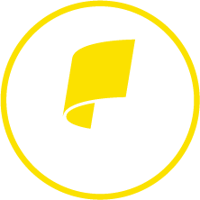Here’s a look at the top HR compliance challenges and how to avoid turning small missteps into expensive lessons.
Common Compliance Traps
Navigating HR compliance can feel like tiptoeing through a minefield — one wrong move can trigger costly consequences. From pay transparency laws to overtime thresholds, new regulations evolve faster than most small HR teams can keep up with. Some of the most common include:
Wage & Hour Woes
Few compliance issues cause more headaches (or lawsuits) than the Fair Labor Standards Act (FLSA). Misclassifying employees as independent contractors, forgetting to track overtime, and overlooking state-specific wage laws can all lead to big problems.
 ☄️The Risk: The Department of Labor (DOL) collected more than $202 million in back wages for workers last year alone. And once you’re on their radar, they can audit up to three years of pay records.
☄️The Risk: The Department of Labor (DOL) collected more than $202 million in back wages for workers last year alone. And once you’re on their radar, they can audit up to three years of pay records.
The Hidden Cost: Beyond fines, morale takes a hit. When employees feel underpaid or discover errors in their paychecks, trust erodes quickly.
How to Stay Compliant:
🕘 Provide training on exempt vs. non-exempt employees, the definition of time (training time, waiting time, on-call time, comp time, and travel time), overtime requirements (state laws, FLSA, and salaried employees), and regulations for paid meal and rest breaks.
🕘 Review worker classifications at least once a year.
🕘 Make sure job descriptions match what employees actually do.
🕘 Use timekeeping software to capture hours worked (especially for remote or hybrid teams).
🕘 Stay current with state and local wage laws.
🚀Pro tip: Partnering with a PEO gives you access to a team of compliance experts who monitor wage and hour regulations for every state where employees are working.
A Patchwork of Leave Laws
If you thought federal FMLA was tricky, try layering on state family leave, paid sick leave, and even local ordinances.
 ☄️The Risk: Failing to grant eligible leave or mishandling documentation can lead to legal woes, payback of lost wages, as well as other penalties.
☄️The Risk: Failing to grant eligible leave or mishandling documentation can lead to legal woes, payback of lost wages, as well as other penalties.
The Hidden Cost: Productivity and morale can suffer when leave policies aren’t applied consistently. If employees feel one person got special treatment, you could see resentment or even turnover.
How to Stay Compliant:
📕Review eligibility requirements for FMLA leave, medical documentation, as well as for other types of protected time off.
📕Keep an updated leave policy that reflects federal, state, and local rules.
📕Train managers on handling leave requests, qualifications, the process, and privacy issues.
📕Audit your PTO and sick-leave balances regularly.
🚀Pro tip: Many PEOs provide leave management systems that automatically track eligibility and ensure documentation is secure and compliant.
Evolving State Labor Laws
Here are a few common minefields for employers operating in multiple states:
🌀Expanded Paid Family & Medical Leave (PFML). More states are expected to implement or expand PFML laws, increasing the timeframes for paid leave and broadening eligibility. Minnesota's PFML program, for example, will require employers to begin payroll contributions, provide employee notices, and update leave policies beginning in January 2026.
In Illinois, a new law requires employers to provide unpaid leave while an employee’s child is in the neonatal intensive care unit (NICU). Employers with 16 to 50 employees must provide 10 days of leave, while employers with 50 employees or more must provide up to 20 days of leave.
🌀Pay Transparency & Minimum Wage Changes. Heading into 2026, a growing number of states, including Illinois, Minnesota, New Jersey, Massachusetts, and Vermont, are implementing legislation requiring employers to include salary and benefits information in job postings.
 Additionally, new minimum wage rates take effect in many states starting January 1, 2026. Review your state-specific wage rates, as these changes directly affect payroll expenses and overtime exemption limits.
Additionally, new minimum wage rates take effect in many states starting January 1, 2026. Review your state-specific wage rates, as these changes directly affect payroll expenses and overtime exemption limits.
🌀AI in Hiring Changes. Some states, like Illinois, are enacting laws that prohibit the use of AI in hiring if it has discriminatory effects. Employers are required to review their AI-driven hiring tools and processes to ensure they promote fairness and comply with anti-discrimination requirements.
🌀Expanded Workplace Safety Requirements. Some states are adopting or expanding workplace safety mandates, such as mandatory violence prevention plans for healthcare employers.
☄️The Risk: Recently, Uber Eats agreed to pay over $15 million to 16,120 drivers for violating Seattle's pay transparency and minimum wage laws for app-based workers. Failing to keep up with state-specific labor and wage laws can result in claims and hefty fines.
How to Stay Compliant:
👨💻👩💻Conduct annual HR compliance audits.
👨💻👨💻Subscribe to HR and legal updates (or lean on your trusted PEO to do that for you).
👨💻👩💻Update your policies and training materials to reflect new laws and changes.
🚀Pro tip: A PEO acts as your compliance partner by tracking changes, updating policies, and keeping you informed before minor issues turn into expensive surprises.
Benefits: A Compliance Blind Spot
 Employee benefits are a huge draw for employees and new hires. Yet, they also come with their own compliance maze.
Employee benefits are a huge draw for employees and new hires. Yet, they also come with their own compliance maze.
☄️The Risk: Compliance errors in eligibility, enrollment, and reporting with the Affordable Care Act (ACA) and COBRA for health benefits can rack up substantial fines - per employee.
How to Stay Compliant:
💼 Audit your benefits program.
💼 Review eligibility rules and enrollment records.
💼 Make sure required notices are distributed on time.
💼 Keep plan documents up to date.
🚀Pro tip: A PEO handles employee benefits administration, including filings and documentation, and ensures your plans stay compliant.
Data Privacy & Employee Records
 HR is a goldmine of sensitive information, including Social Security numbers, health information, addresses, and banking details. With increasing data privacy regulations, protecting that data is now required, not just good practice.
HR is a goldmine of sensitive information, including Social Security numbers, health information, addresses, and banking details. With increasing data privacy regulations, protecting that data is now required, not just good practice.
☄️The Risk: Privacy laws demand ironclad security. A data breach can lead to costly legal action and mandatory notifications. And the reputational fallout can be devastating.
The Hidden Cost: Lost productivity and employee trust. A breach or compliance failure can make employees hesitant to share information or participate in programs.
How to Stay Compliant:
💻Ensure HR systems are secure.
💻Review data retention and destruction policies.
💻Train employees in data safety.
💻Keep track of emerging state privacy laws.
🚀Pro tip: Many PEOs use powerful data security systems and can unlock a level of speed, precision, and insight that manual processes simply can’t match, reducing both your risk and your liability.
The New Era of Remote Work
The pandemic may be behind us, but remote and hybrid work are here to stay, creating a compliance puzzle of their own. When employees work from home in another state, your business may now be subject to that state’s tax laws, workers’ comp rules, and wage requirements.
 ☄️The Risk: Failing to comply with multi-state requirements, including tax withholding, required workplace posters, and leave laws, can trigger penalties and lawsuits.
☄️The Risk: Failing to comply with multi-state requirements, including tax withholding, required workplace posters, and leave laws, can trigger penalties and lawsuits.
And, if an employee gets injured while working remotely and you haven’t properly updated your workers’ comp coverage, your business could be on the hook.
How to Stay Compliant:
👩💻Register your business in the state where employees are working.
👨💻Confirm each state’s rules for workers’ comp, payroll taxes, and overtime.
👩💻Update your employee handbook with clear expectations for remote work.
👨💻Revisit your cybersecurity policies and make sure remote workers are covered.
🚀Pro Tip: PEOs are built for this type of battle. They handle multi-state registration, payroll compliance, and benefits administration, so you don’t have to play catch-up every time you have workers crossing state lines.
Mitigating Risks
In today’s rapidly changing regulatory environment with hidden pitfalls, HR compliance is not a one-time task — it's a continuous process that demands vigilant attention and expertise.
The upside? You don’t have to traverse the minefield alone. With the right partner, compliance becomes a strategic edge that frees you to focus on what drives your business forward.
That’s where a PEO changes the game. Guiding you through even the most complex terrain, a PEO delivers the tools, technology, and expertise of a full-scale HR department — without the overhead.
🛡️Our Compliance Crusader!🛡️
 Meet Wonder Human, the compliance crusader of Propel HR’s Propellers team. This superhero defends your business with unbeatable regulatory expertise, ensuring you stay compliant with multi-state regulations, labor laws, and industry standards.
Meet Wonder Human, the compliance crusader of Propel HR’s Propellers team. This superhero defends your business with unbeatable regulatory expertise, ensuring you stay compliant with multi-state regulations, labor laws, and industry standards.
Learn how to avoid common compliance traps and protect your business by visiting thepropellers.com
Find Out What a PEO Can Do for You
If you’re a small to mid-sized business, a PEO can lighten your workload and strengthen your operations. Imagine focusing on growth while experts handle your payroll, taxes, benefits, HR, and compliance.
⬇️Read more about the advantages of working with a PEO in our new series:
🔷 HELP WANTED: HR Team or PEO Partner
 Investing in an HR team versus partnering with a PEO, which path is best for your small business? As your business grows, managing HR gets complicated - fast.
Investing in an HR team versus partnering with a PEO, which path is best for your small business? As your business grows, managing HR gets complicated - fast.
Should you build your own HR team or explore the benefits of partnering with a PEO? Here’s how to decide which choice best fits your business. ➡️Link #1Link #1Link #1Read More
🔷 NEW RESEARCH: More Small Businesses Are Turning to PEOs
 New research from the National Association of Professional Employer Organizations (NAPEO) shows that PEOs are helping small businesses scale - a game-changer in 2026. ➡️Link #2Link #2Link #2Read More
New research from the National Association of Professional Employer Organizations (NAPEO) shows that PEOs are helping small businesses scale - a game-changer in 2026. ➡️Link #2Link #2Link #2Read More
About Propel HR. Propel HR is an IRS-certified PEO that has been a leading provider of human resources and payroll solutions for more than 25 years. Propel partners with small to mid-sized businesses to manage payroll, employee benefits, compliance and risks, and other HR functions in a way that maximizes efficiency and reduces costs. For more information, visit www.propelhr.com










